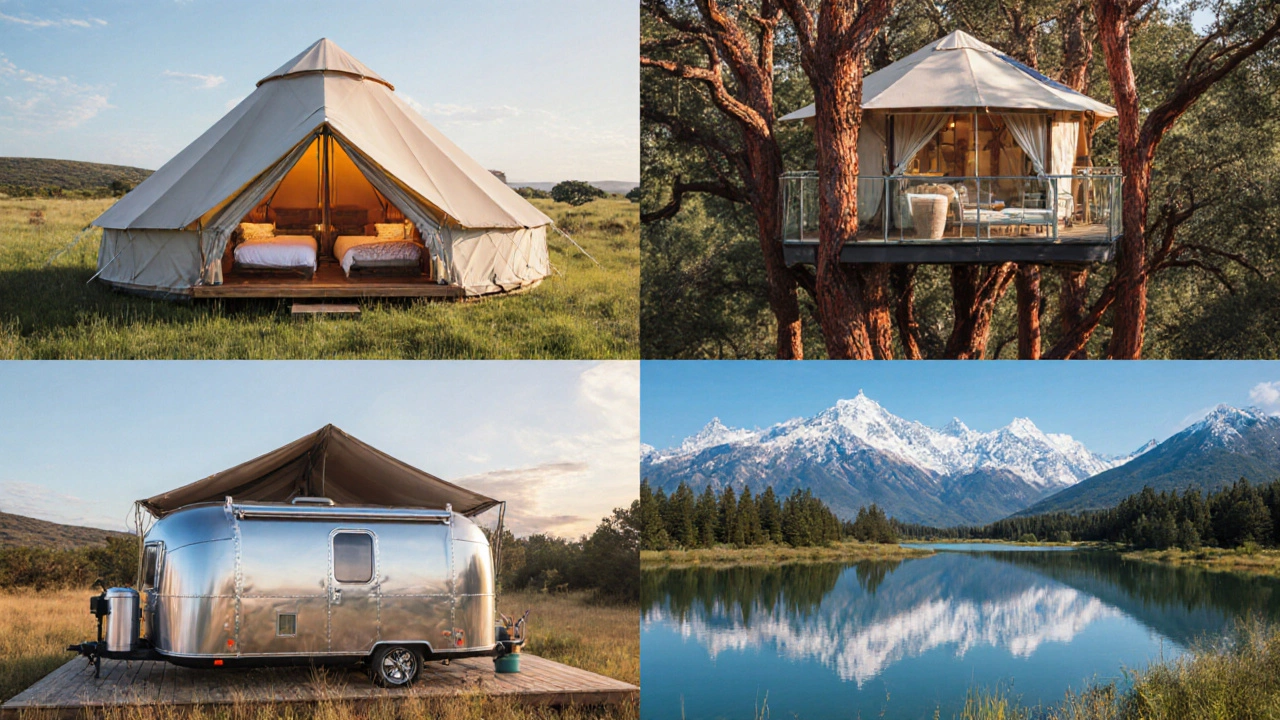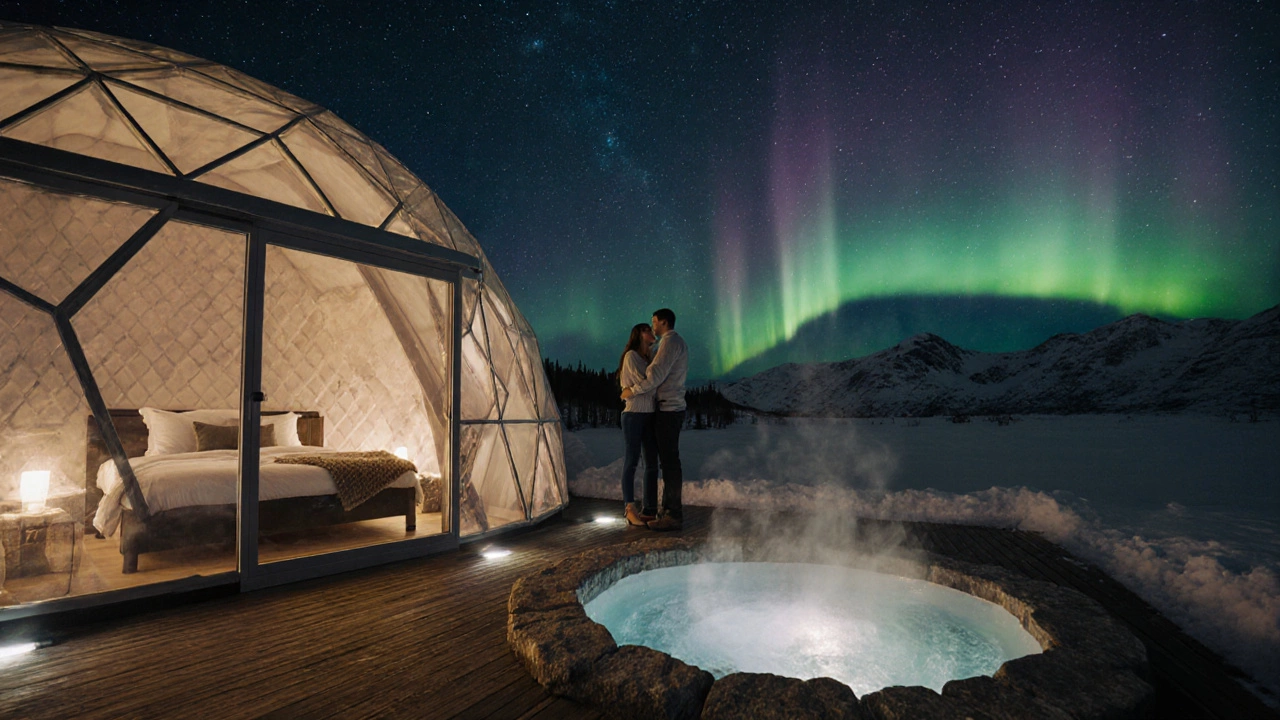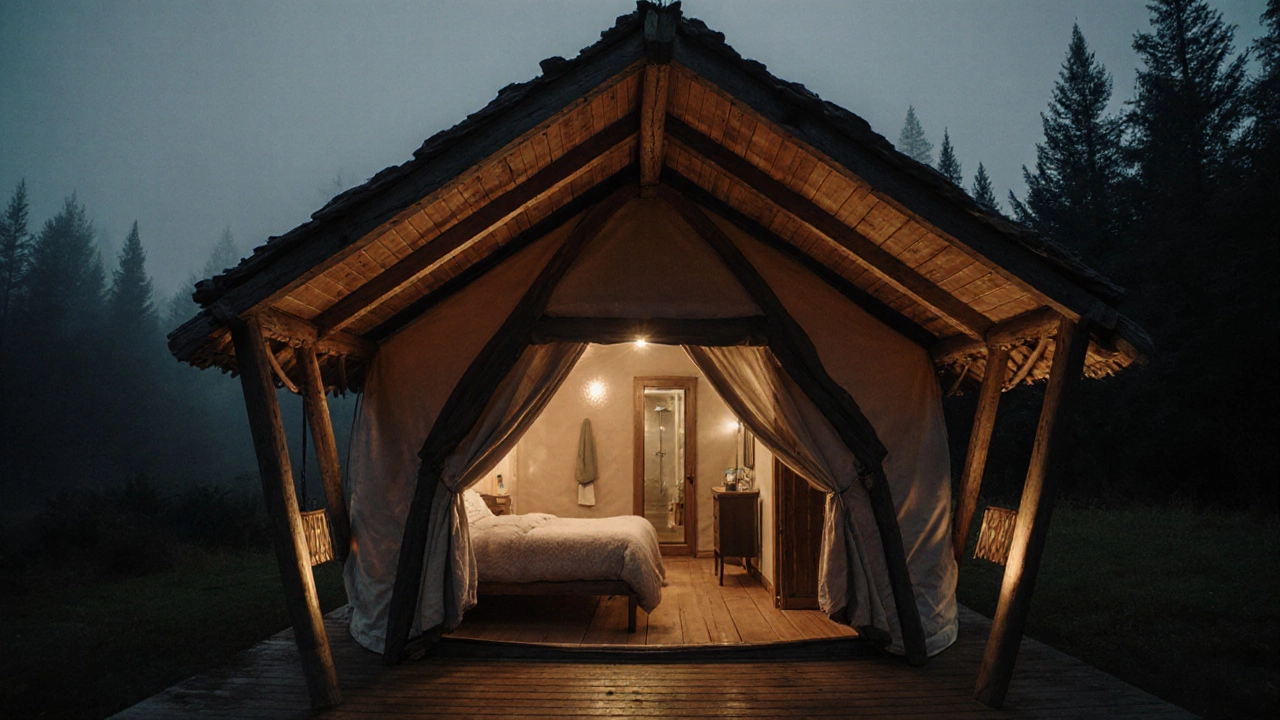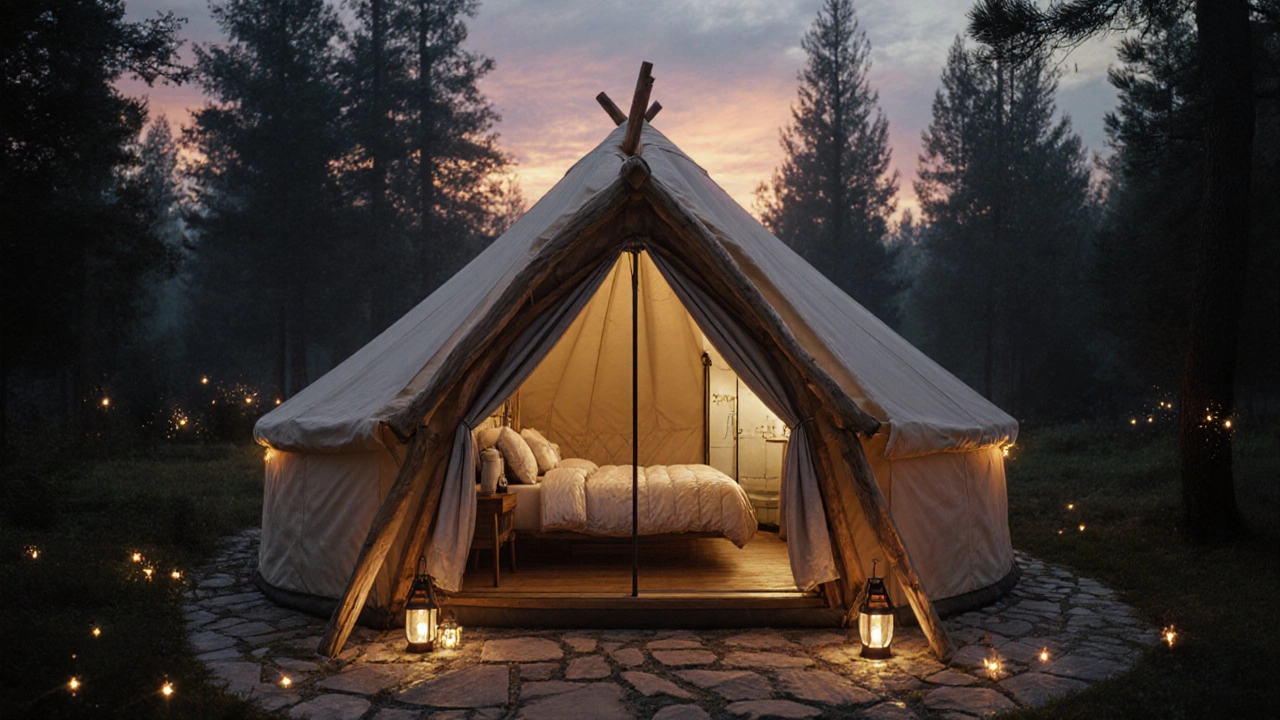Luxury Glamping Cost Estimator
Estimated Cost Breakdown
Common Amenities Included
Key Takeaways
- Luxury glamping blends outdoor adventure with five‑star comforts.
- Typical amenities include private bathrooms, gourmet meals, and premium bedding.
- Popular lodging types are yurts, safari tents, treehouse cabins, and Airstream trailers.
- Top regions include the U.K., Scandinavia, the American West, and Southeast Asia.
- Expect to pay 2‑5× the price of standard camping, but you get a hassle‑free experience.
When travelers talk about luxury glamping, they are describing a way to enjoy nature without sacrificing comfort. Below we break down exactly what it means, what you’ll find on the ground, and how to choose the right spot.
Luxury glamping is a high‑end version of glamping that combines the freedom of camping with resort‑level amenities. The term has exploded in popularity since the early 2010s, but the core idea stays simple: stay outdoors, sleep in a structure that feels more like a boutique hotel than a campsite.
How Luxury Glamping Differs from Regular Glamping
Regular glamping-think basic canvas tents with a mattress and a campfire-offers a step up from “roughing it.” Luxury glamping raises the bar in three ways:
- Design & Materials: Structures use timber frames, insulated walls, and high‑quality furniture.
- Full‑Service Amenities: Private en‑suite bathrooms, heating or air‑conditioning, and often on‑site chefs.
- Curated Experiences: Guided hikes, spa treatments, or wine‑tasting tours are part of the package.

Core Amenities You’ll Find
While each site is unique, most luxury glamping locations share a set of common features:
- Luxury bedding - down duvets, high‑thread-count sheets.
- Private bathroom - shower, toilet, and toiletries.
- Climate control - wood‑burning stove, electric heater, or air‑conditioner.
- Power & Wi‑Fi - reliable electricity and fast internet.
- Dining options - from fully catered meals to on‑site BBQ stations.
- Recreational facilities - hot tubs, yoga decks, or private decks with views.
Popular Accommodation Types
Luxury glamping isn’t limited to a single kind of shelter. Below are the most common options, each introduced with its own micro‑data definition.
Yurt is a circular, timber‑frame tent with a fabric cover, often equipped with a solid floor and full interior amenities. Yurts are popular in the U.S. Southwest and Central Europe because they blend a rustic look with a spacious interior.
Safari tent is a large canvas structure on a raised platform, featuring a king‑size bed, en‑suite bathroom, and sometimes a private deck. Safari tents dominate many African game reserves and have become a staple in luxury resorts worldwide.
Treehouse cabin is a elevated wooden dwelling built among the branches, offering panoramic views and a secluded feel. Treehouse cabins are a hit in forested destinations like the Scottish Highlands and the Pacific Northwest.
Airstream trailer is a metal‑alloy travel trailer with a sleek, aerodynamic shape, often refurbished with modern interiors and full bathroom facilities. Airstreams are a favorite for road‑trip enthusiasts who want upscale comfort on wheels.
Eco resort is a sustainable hospitality property that blends luxury lodging with low‑impact environmental practices. Many eco resorts combine glamping pods with solar power, rainwater harvesting, and locally sourced cuisine.
Top Global Luxury Glamping Destinations (2025)
Here are five regions where the luxury glamping scene is especially vibrant this year:
- United Kingdom: Sites like The Firs Farm in Cornwall offer shepherd’s‑hut cabins with sea views.
- Scandinavia: Norway’s Lyngen Lodge blends glass igloos with heated floors, perfect for aurora watching.
- American West: Utah’s Under Canvas provides safari‑style tents near Zion National Park.
- Southeast Asia: Thailand’s The reserve in Phuket pairs beachfront villas with private butlers.
- Australia: The Outback Luxury Safari in the Northern Territory offers desert‑ready Airstreams with solar power.

Cost Comparison: Luxury Glamping vs Regular Camping vs Boutique Hotel
| Aspect | Luxury Glamping | Standard Camping | Boutique Hotel |
|---|---|---|---|
| Nightly rate (USD) | $250‑$600 | $30‑$80 | $180‑$450 |
| Private bathroom | Yes (en‑suite) | No (shared facilities) | Yes (full suite) |
| On‑site chef | Often available | Self‑catering | Restaurant service |
| Wi‑Fi | High‑speed | Limited or none | High‑speed |
| Nature immersion | Direct, with comfort | Raw, basic | Limited (city or resort setting) |
How Much Does Luxury Glamping Really Cost?
Pricing depends on season, location, and the type of accommodation. In the U.K., a weekend in a shepherd’s‑hut on the coast can run £350‑£500. In the U.S. Southwest, a safari tent near a national park may cost $400‑$700 per night during peak season. Off‑peak months can drop 20‑30%.
Don’t forget extra fees: cleaning, firewood, and optional experiences (e.g., guided hikes) can add $50‑$150 per stay.

Booking Tips & Common Pitfalls
- Book early: Premium sites sell out 6‑12 months in advance, especially for holidays.
- Read the amenity list: Some “luxury” spots still require you to bring linens.
- Check cancellation policy: Weather‑related refunds vary widely.
- Verify sustainability claims: Look for certifications like EarthCheck or Green Globe.
- Plan transportation: Many luxury glamping venues are remote; arrange a shuttle or rental.
Sustainability: Is Luxury Glamping Eco‑Friendly?
The industry markets itself as green, but the reality varies. True eco‑friendly sites use solar panels, composting toilets, and locally sourced food. However, some upscale properties rely heavily on diesel generators and imported furnishings. Look for concrete sustainability metrics-energy consumption per guest, water‑recycling rates, and waste diversion percentages-to make an informed choice.
Frequently Asked Questions
What exactly differentiates a luxury glamping tent from a regular tent?
A luxury glamping tent usually features a solid frame, insulated walls, a wood or electric floor heating system, a private bathroom with flushing toilet, high‑thread‑count linens, and often a small kitchen or minibar. A regular tent only offers a canvas shelter and a sleeping pad.
Do I need to bring my own food and cooking gear?
Most luxury sites provide full‑board or half‑board options. If you prefer to cook yourself, many locations offer a well‑equipped communal kitchen or a small kitchenette inside the unit.
Is Wi‑Fi reliable in remote glamping spots?
It varies. Premium sites invest in satellite or 5G boosters to deliver high‑speed internet, while more rustic venues may only offer basic connectivity. Always check the provider’s speed details before booking.
Can I bring pets?
Pet policies differ by property. Some luxury glamping resorts welcome dogs and even provide pet‑friendly bedding, while others restrict animals to protect wildlife. Look for a clear pet policy on the site.
What should I pack for a luxury glamping weekend?
Even though the accommodation is upscale, bring casual outdoor clothing, sturdy shoes, a reusable water bottle, sunscreen, and a light jacket for evenings. Most sites provide towels, linens, and toiletries, so you can skip those.
Luxury glamping lets you enjoy nature without the compromises of primitive camping. By knowing the key amenities, cost factors, and sustainability considerations, you can pick a spot that fits your style and budget. Ready to trade a hotel room for a starlit sky and a plush bed? The next adventure is just a few clicks away.
